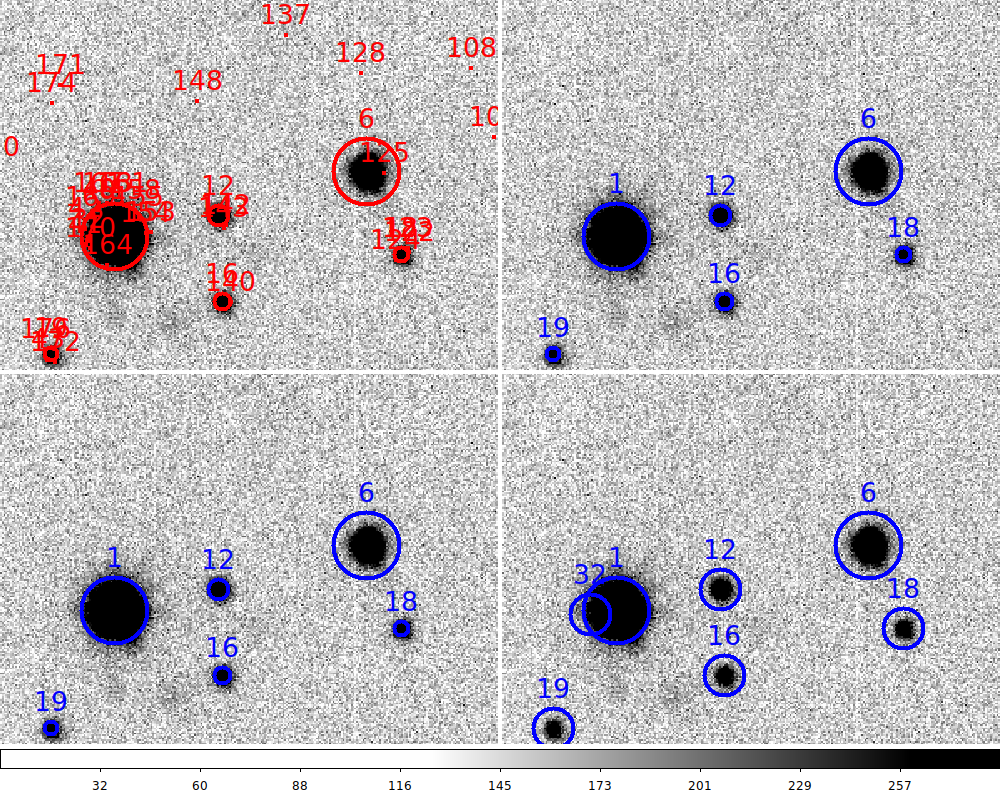Create both a ds9 regions file and a cdfp file based on the contents
of an image source catalog from built with
image_catalogs. In this
verison, unlike the related routine name photom2_prep, we use only
the X,Y (centroids Xcent,Ycent) to build the files. Hence, no Ra,Dec
will be bresent in the cdfp, but these files can be constructed whether
or not the image contains a valid WCS in the header.
% reg_from_imgcat --help
usage: reg_from_imgcat a.fits [-v] [-h] [-n NumPixMin] [-far ApRadPix] [-fmin MinApPix]
Additional options:
-v = print verbose comments and run in debug mode
-h = show a help file and then exit
-n = minimum (integer) number of pixels for imgcat0 sources
-far = fixed aperture radius in pixel units (can be "none")
-fmin = minimum allowed fixed aperture radius in pixel units (can be "none")
EXAMPLES:
# All sources have apertures scaled to NumPix
% reg_from_imgcat 20191018T024545.3_acm_sci.fits
# Same as above, but a minimum of radius=6.0 is imposed
% reg_from_imgcat 20191018T024545.3_acm_sci.fits -fmin 6.0
This routine was established after I relaized that we will frequently want to
perform an early profile analysis of bright objects on images (acm) that have
useful WCS in the image headers. By using the -n and =far command options
above we can control the size of the objects selected and the maximum size of
of the aperture to bee used for profile calculation and/or aperture photometry.
In June2020 I modified the cdfp2reg routine so that a
MINIMUM aperture size can be specified for the basename.cdfp.reg file and its associated
regions files. By following the cdfp2reg links just shown you can view a nice figure that
demonstrates this capability.
This routine is related to the photom2_prep
in that its primaray role is to provide a way of visualizing and using the sources
in an image detected with image_catalogs.
